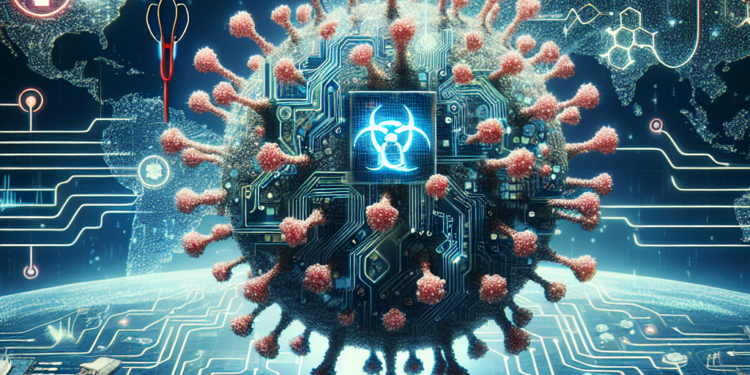The use of artificial intelligence (AI) in pandemic response efforts has proven to be crucial in combating the spread of infectious diseases around the world. From predicting outbreaks to tracking and monitoring cases, AI has revolutionized the way we approach public health crises. In this article, we will explore the numerous ways in which AI has played a vital role in pandemic response efforts, as well as the future possibilities of AI in healthcare.
One of the most significant contributions of AI in pandemic response efforts is its ability to predict outbreaks before they occur. By analyzing data from various sources, such as social media posts, internet searches, and healthcare records, AI can identify patterns and trends that may indicate the emergence of a new disease. This early warning system allows public health officials to take proactive measures to contain the spread of the disease and prevent it from becoming a full-blown pandemic. For example, in the case of the COVID-19 pandemic, AI was used to track the movement of the virus and predict where new cases would likely appear next, enabling healthcare workers to allocate resources and implement interventions accordingly.
Furthermore, AI has been instrumental in tracking and monitoring cases of infectious diseases. By analyzing data from sources such as hospital records, health surveys, and wearable devices, AI can identify patterns in the spread of the disease and predict how it may evolve over time. This information is crucial for making informed decisions about resource allocation and treatment strategies. For instance, during the Ebola outbreak in West Africa, AI was used to track the movement of infected individuals and predict where new cases were likely to appear, helping healthcare workers to target their efforts more effectively.
In addition to predicting outbreaks and tracking cases, AI has also been used to develop diagnostic tools for detecting infectious diseases. By analyzing medical imaging, genetic sequencing, and other data, AI can identify patterns and markers that indicate the presence of a specific disease. This can help to speed up the diagnosis process and improve the accuracy of results, leading to better treatment outcomes for patients. For example, AI has been used to develop algorithms that can quickly analyze chest X-rays and identify signs of pneumonia, a common complication of many respiratory infections.
Moreover, AI has changed the way we approach vaccine development and distribution. By analyzing genetic sequences and immune responses, AI can help researchers to identify potential vaccine candidates and predict how effective they may be in preventing disease. This can significantly accelerate the time it takes to develop and test new vaccines, allowing them to be deployed more quickly in response to a pandemic. Furthermore, AI can also help to optimize vaccine distribution strategies by identifying high-risk populations and determining the most efficient way to reach them. This can help to ensure that vaccines are distributed equitably and reach those who need them the most.
Looking to the future, the possibilities of AI in pandemic response efforts are limitless. Advances in machine learning and data analytics are enabling researchers to develop more sophisticated models for predicting outbreaks, tracking cases, and developing treatments. With the help of AI, we may soon be able to predict future pandemics with even greater accuracy and develop targeted interventions to prevent them from spreading. Additionally, AI can help to improve the efficiency of healthcare systems by automating routine tasks and freeing up healthcare workers to focus on more complex and critical aspects of patient care.
In conclusion, AI has played a crucial role in pandemic response efforts by predicting outbreaks, tracking and monitoring cases, developing diagnostic tools, and optimizing vaccine development and distribution. Its ability to analyze vast amounts of data and identify patterns that may be invisible to human observers has revolutionized the field of public health and has the potential to save countless lives in the future. As we continue to harness the power of AI in healthcare, we must also be mindful of the ethical and privacy implications of using these technologies. By striking a balance between innovation and responsibility, we can ensure that AI remains a powerful tool for protecting public health and advancing humanity’s fight against infectious diseases.













